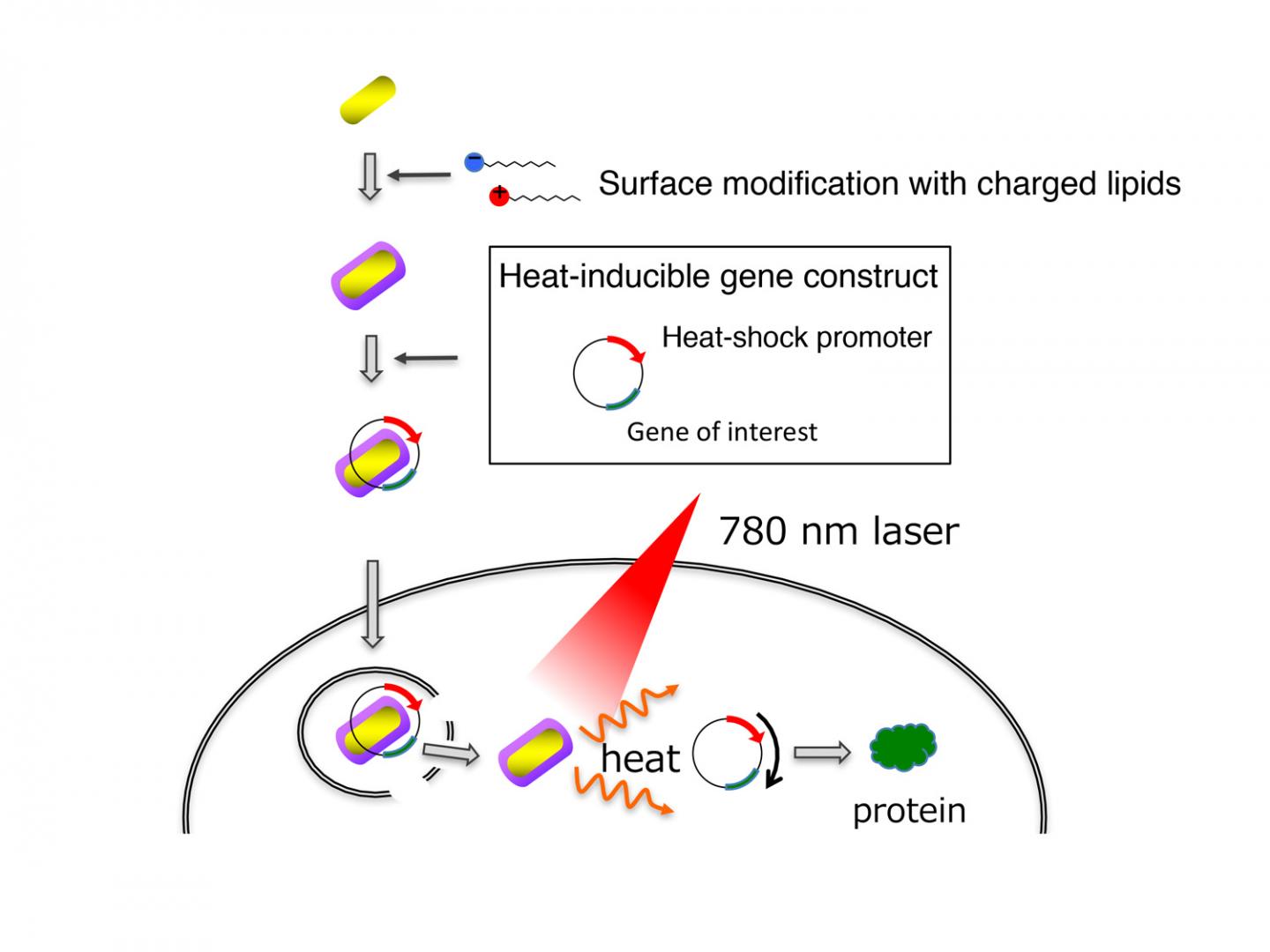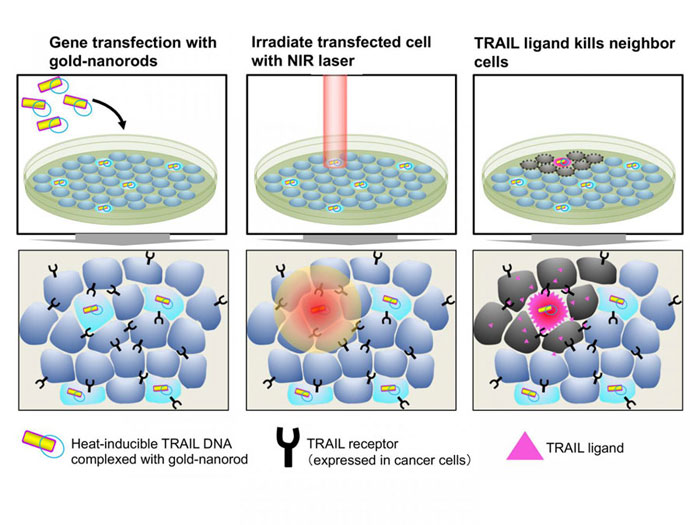In a novel approach to light-inducible gene regulation, researchers began by modifying the surface of nanorods to make them more efficient in transporting cancer-killing genes to cells.
The gold nanorods, which produce heat when exposed to a NIR laser, were coated with two conventional lipids, oleate and dioleoyl-3-trimethylammonium-propane (DOTAP). The lipids enhanced the nanorods’ ability to interact with and penetrate cells efficiently, while maintaining low cytotoxicity.

This is the delivery and activation of genes by gold nanorods. Gold nanorods coated with charged lipids efficiently bind to DNA and penetrate cells. The team designed an artificial gene that is turned on by heat generated by the gold nanorods upon exposure to near infrared light illumination. Courtesy of Kyoto University iCeMS.
The researchers also developed a gene carrier (i.e. a plasmid vector) containing a heat shock protein (HSP) that became activated in response to heat. A photothermal approach was used to activate the HSP promoters and deliver HSP promoter-driven protein expression vectors and photothermal heaters into cells.
The vector was bound to an enhanced green fluorescent protein (EGFP) gene, and then transferred into mammalian cells by the lipid-coated gold nanorods. Exposing cells to an NIR laser for ten seconds heated up the gold nanorods, turning on the EGFP gene. Surrounding nontargeted cells showed little to no EGFP expression.
TRAIL, a protein that induces the process of cell death in cancer cell lines, was then added to the vector. IR illumination of cells transfected by TRAIL-carrying nanorods led to a high cell death rate in surrounding cancer cells.

Gold nanorods carrying the heat-inducible TRAIL gene are transfected into cancer cells. Cancer cells express TRAIL receptors while normal cells do not. Illumination by a near-infrared laser warms gold nanorods and induces TRAIL expression in transfected cells. TRAIL then kills the surrounding cancer cells. Courtesy of Kyoto University iCeMS.
The findings of the study, which was performed at Kyoto University, led the research team to propose a novel protocol for NIR-inducible, site-directed gene expression using a combination of three conventional components capable of both transfection and photothermal heating.
According to the researchers, this novel method “provides a unique opportunity for site-directed, light-inducible transgene expression in mammalian cells by a near-infrared laser, with minimal phototoxicity.”
The research was published in Scientific Reports (doi:10.1038/s41598-017-04912-1).